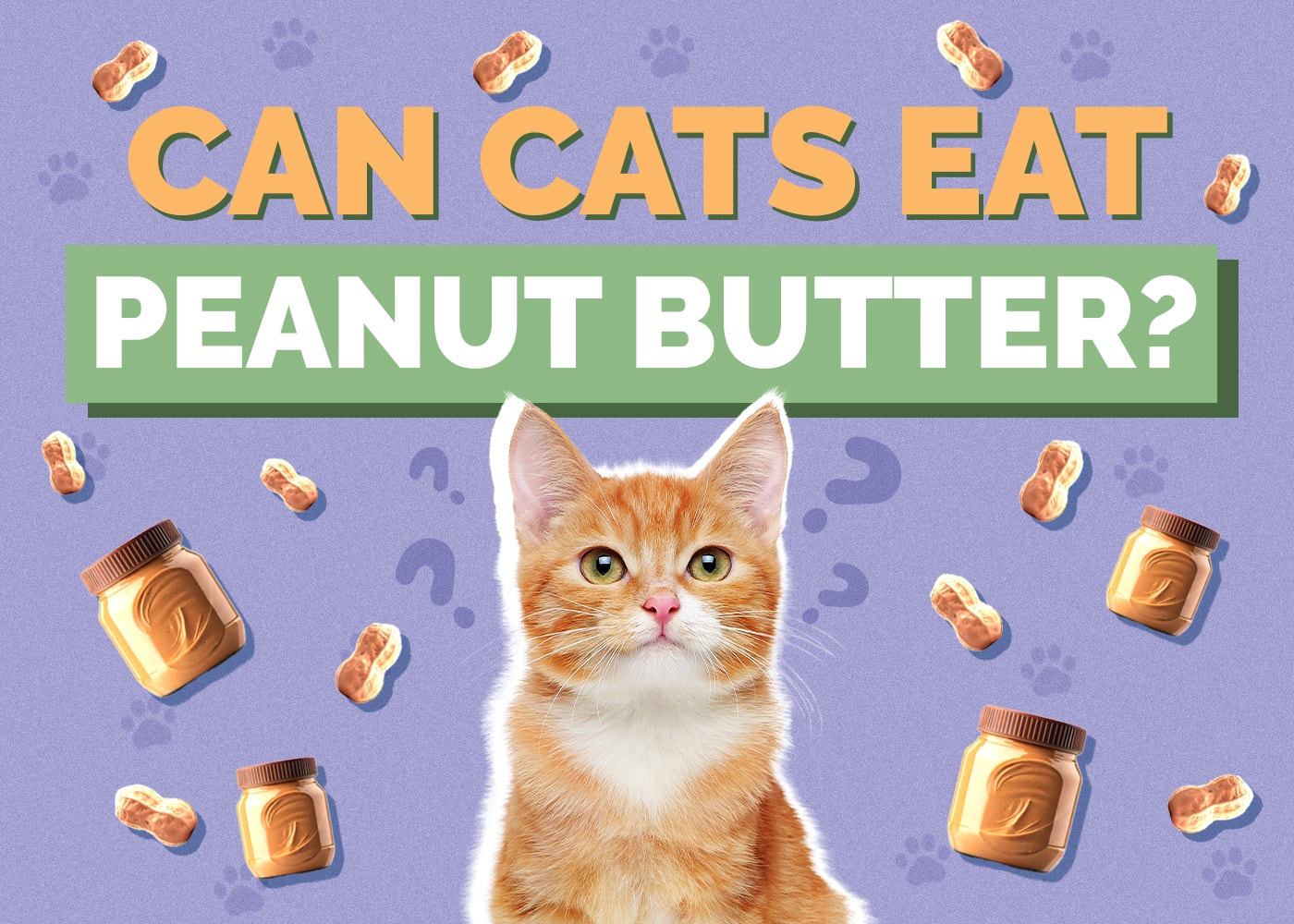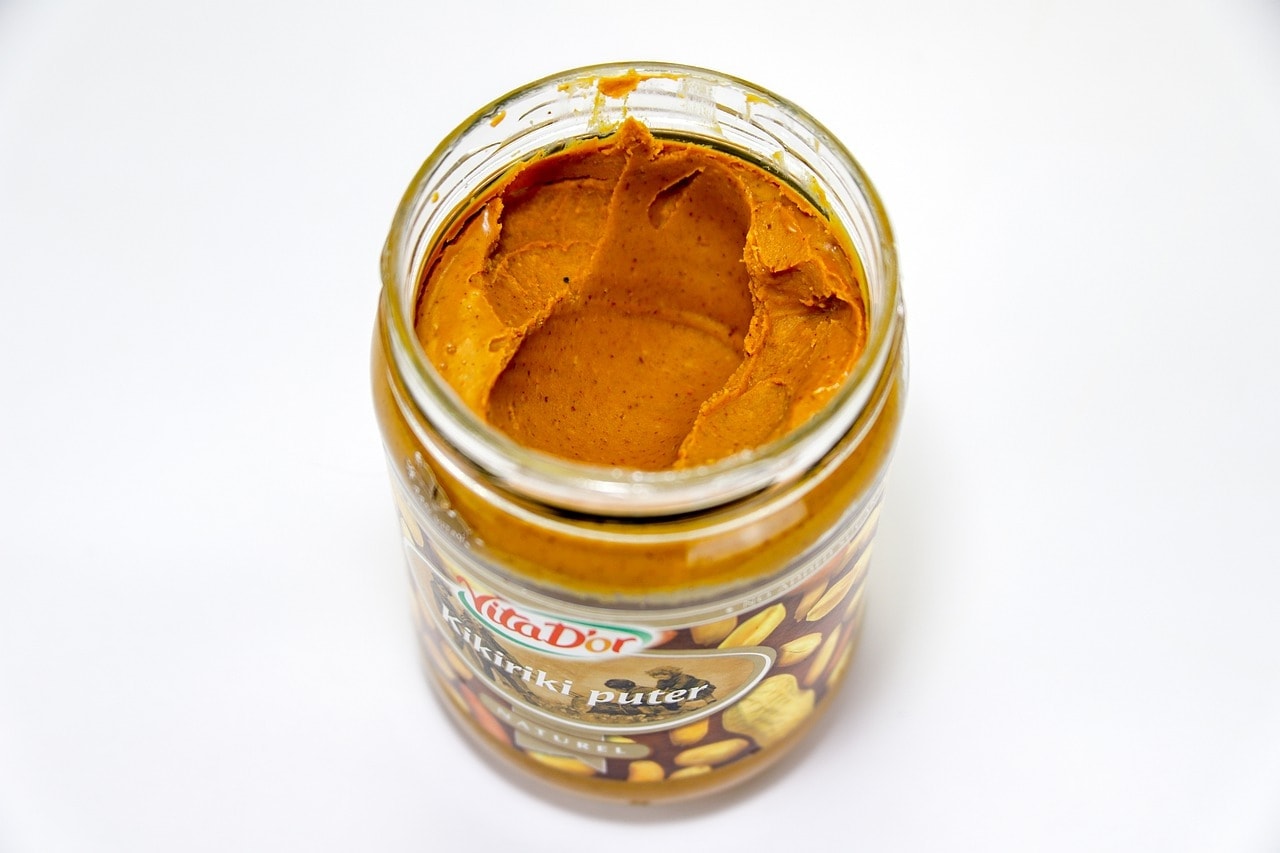Can Cats Eat Peanut Butter? Vet-Reviewed Facts & Considerations
By Ed Malaker
Updated on

Peanut butter is a popular lunchtime snack, it’s tasty and packed with protein that can help us get through the day, and since it’s so high in protein, many people wonder if it’s safe to give their cat. The short answer is yes, cats can try a little bit of peanut butter, but there are several things you should consider before you make it a regular part of their diet. Keep reading while we look at the health benefits and potential dangers of allowing your cat to eat peanut butter, and we’ll also discuss the best way to feed it to your pet for a healthy snack.
Is Peanut Butter Bad for My Cat?
Choking Hazard
Peanut butter is thick and dry and can easily create a choking hazard, especially if you use a chunky brand. Even a small amount of peanut butter can create a hazard, so you will need to watch your cat while it eats and make sure to have plenty of fresh water nearby that your cat can drink.
Low Nutritional Value
Besides a plant-based protein which is not ideal for a carnivorous cat, there are no helpful nutrients that will benefit your cat from eating this food.

Allergies
Just like people, peanut butter can cause an allergy flare-up in cats and can even be life-threatening if your cat is especially sensitive to peanut allergies. Signs of an allergic reaction include scratching, hair loss, ear infections, diarrhea, vomiting, and weight loss. An anaphylactic reaction includes difficulty breathing, facial swelling, seizures, and coma. If you notice any of these signs and suspect a peanut allergy, we recommend contacting the vet immediately.
Bad Fats
Many companies use trans fats and other bad fats to keep the peanut butter from separating and to give it a longer shelf life. However, these ingredients can be harmful to your cat. We recommend looking at your peanut butter ingredients list to ensure there are no hydrogenated oils on the ingredients to keep these fats out of your cat’s diet.
High in Calories
Another problem with feeding your cat peanut butter is that it’s high in calories, especially since the nutritional value is so low. Extra calories can easily lead to weight gain, and obesity among cats is a serious issue in America, with many experts stating that 50% of cats over 5 are overweight. Obesity can lead to diabetes, cardiovascular disease, kidney failure, and more1. It can also make it difficult for your cat to maintain their regular activities and even to groom themselves properly.
Artificial Sweeteners
Many low-sugar peanut butter brands contain an artificial sweetener called xylitol2. While there are a few studies that suggest that xylitol is not toxic to cats, it is known to be toxic to dogs. Since cats are unable to perceive sweetness and this chemical does not add nutritional value to your cat’s diet, we recommend avoiding it and any other added sugars or artificial sweeteners altogether.

 Is Peanut Butter Good for My Cat?
Is Peanut Butter Good for My Cat?
Good Fats
Cats require omega-6 fats in their diet, which peanut butter provides, but it does not supply your cat with the essential omega-3 fatty acids. Omega-6 can promote inflammation if not supplied along with the omega-3 that balances it, and it can cause problems in older cats with arthritis or other joint problems that tend to swell. Peanut butter also contains oleic acid, a component in their pheromones, which could explain your cat’s interest in this food.
How Can I Feed Peanut Butter to My Cat?
We recommend that you avoid feeding peanut butter to your cat. There are too many health risks associated with making it a regular part of their diet. If your cat really wants it, you can occasionally let them lick the spoon after you make a sandwich, but only if you are using plain, unsweetened peanut butter. All-natural peanut butters are better and have fewer chemical ingredients, making it less likely to cause any issues.

Pumpkin
You can try serving pumpkin purée as a peanut butter alternative that your cat might like. It’s much healthier and will add plenty of fiber to their diet, which will help keep your cat’s digestion regular. It’s the perfect food when your cat is constipated, and it’s also low in sugar and calories, so it can help with weight management.
Summary
We recommend avoiding peanut butter in your cat’s diet. If your cat ate a small amount or is bugging you to lick the spoon, it will probably be fine, but there are plenty of other foods that your cat will enjoy that provide more nutrients. We recommend pumpkin purée because it’s similar to peanut butter in texture, and your cat might be willing to give it a try. It’s packed with fiber and can help relieve diarrhea and constipation.
We hope you have enjoyed reading over our look into this common lunchtime food and found the answers you needed. If we have helped you provide a healthier treat for your cat, please share this guide on feeding cats peanut butter on Facebook and Twitter.
Looking for more guides on what your cat can have? Try:
Featured Image Credit to: Pixabay













